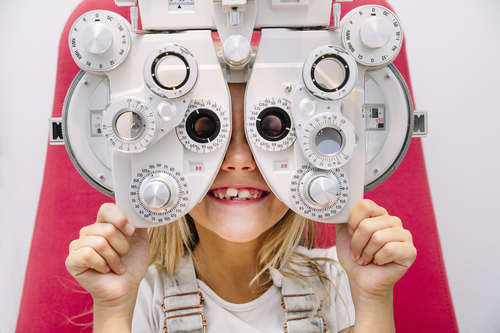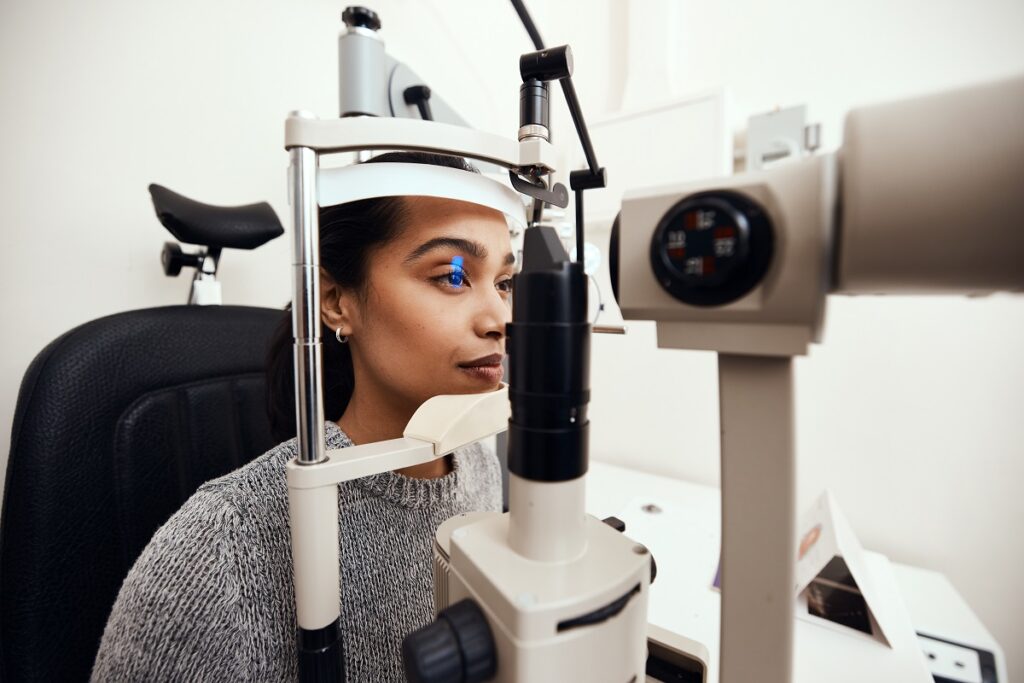The Significance of Regular Check-Ups with an Eye Doctor Optometrist
Discovering the current Technological Innovations in Optometry and What They Mean for Eye Doctors
From the precision of Optical Comprehensibility Tomography to the nuanced insights offered by AI-driven diagnostic devices, these developments are setting new standards in patient analysis and therapy. As these advancements permeate the practice, eye doctors are faced with the challenge of embracing these devices to enhance person end results.
Developments in Diagnostic Devices
Progressing the field of optometry, advancements in analysis tools have actually transformed the way eye care experts examine and identify aesthetic impairments and ocular problems. The previous years has experienced considerable technological improvements, enabling even more exact and detailed examinations.
One more secret development is the intro of sophisticated corneal topography systems, which map the surface curvature of the cornea with accuracy. These tools are particularly advantageous for fitting get in touch with lenses and diagnosing corneal conditions. Additionally, digital retinal imaging has actually transformed traditional ophthalmoscopy, offering comprehensive, panoramic views of the retina that promote complete visual evaluations.
The advancement of wavefront aberrometry has actually also been crucial, making it possible for the analysis of refractive mistakes with unmatched accuracy (Eye Doctor). This innovation aids in customizing corrective lenses and enhancing medical end results for refractive surgical procedures. Jointly, these analysis advancements empower eye doctors to supply superior individual treatment, making sure early intervention and tailored therapy techniques, inevitably boosting visual wellness end results
AI in Patient Monitoring
Structure on the structure of cutting-edge diagnostic tools, the consolidation of man-made intelligence (AI) in individual monitoring represents a transformative leap for optometry. AI systems are significantly employed to boost performance, precision, and personalization in patient care.
In addition, AI-driven systems facilitate streamlined individual interactions and management processes. Automated scheduling, virtual examinations, and customized follow-up plans not only improve individual fulfillment yet likewise optimize time management for specialists. These systems can triage people based upon the urgency of their conditions, guaranteeing that those in crucial requirement receive prompt focus.
Furthermore, AI improves decision-making by supplying eye doctors with evidence-based suggestions and treatment paths. By incorporating data from digital wellness records, AI tools provide insights that inform medical choices, decreasing the threat of mistakes and boosting patient results. As AI continues to advance, its function in client monitoring will likely increase, reshaping the landscape of optometric care.
Advancements in Retinal Imaging
In the realm of optometry, retinal imaging has actually seen exceptional technical advancements that are improving diagnostic capacities and individual care. Developments such as Optical Comprehensibility Tomography (OCT) and fundus digital photography have actually changed how eye doctors analyze the retina and visualize. OCT, in particular, offers high-resolution, cross-sectional pictures of the retina, permitting for the detailed examination of its layers. This capacity is invaluable for very early discovery and management of conditions like glaucoma, diabetic person retinopathy, and age-related macular degeneration.
Improved imaging methods like OCT angiography are additional refining analysis accuracy. Eye Doctor. Such innovations help with the recognition of minute retinal changes that could represent disease development.
Furthermore, innovations in artificial intelligence are enhancing retinal imaging by enabling automatic analysis of huge datasets. These systems aid eye doctors in recognizing patterns a measure of pathology, thereby enhancing analysis accuracy and efficiency. Collectively, these innovations are changing retinal imaging right into a cornerstone of modern eye treatment, improving results and expanding restorative possibilities.
Teleoptometry's Growing Function
Teleoptometry is significantly ending up being a vital element of eye care, driven by advancements in electronic communication and analysis tools. As optometry welcomes electronic change, teleoptometry promotes remote consultations, allowing eye doctors to expand their services past conventional boundaries. This is specifically useful in rural and underserved areas where access to specialized eye care is commonly limited. By leveraging high-resolution video clip conferencing and advanced retinal imaging, optometrists can conduct extensive eye tests from afar, guaranteeing prompt diagnosis and therapy.
The integration of expert system (AI) further improves teleoptometry, enabling the analysis of visual data and assisting in the discovery of ocular problems such as glaucoma and diabetic person retinopathy. AI-powered formulas can swiftly translate intricate imaging information, offering eye doctors with important insights that bolster scientific decision-making.
Moreover, teleoptometry sustains connection of treatment through smooth assimilation with electronic health records (EHRs), enabling eye doctors to keep comprehensive pop over to this site client histories. This ensures that patients obtain consistent and personalized treatment even when speaking with different specialists.
Despite these advantages, obstacles remain, including making sure data security and handling client expectations. Nevertheless, teleoptometry represents a substantial stride in the direction of more available, efficient, and patient-centered eye treatment. As modern technology advances, its function is poised to expand additionally.

Future Patterns in Eye Care
A myriad of ingenious patterns is readied to improve the future of eye care, driven by technological developments and the progressing needs of patients. One significant trend is the combination of synthetic knowledge (AI) in diagnostics, which promises to improve the precision and efficiency of eye assessments. AI algorithms can examine substantial quantities of data from retinal pictures, possibly identifying conditions like diabetic person retinopathy and glaucoma earlier than traditional methods.
Furthermore, tailored medicine is acquiring traction in optometry, with genetic testing educating tailored treatment strategies. This this content technique aims to optimize patient outcomes by tailoring treatments to individual hereditary profiles. Wearable technology, such as wise get in touch with lenses, is also imminent, using real-time monitoring of intraocular pressure or sugar levels, therefore providing constant insights into eye and systemic health and wellness.
The fostering of enhanced reality (AR) and virtual truth (VR) in training and individual education and learning is an additional emerging fad. These modern technologies supply immersive experiences that can improve understanding and abilities both for eye doctors and individuals. As these trends evolve, eye doctors should stay abreast of technical improvements to supply advanced treatment, making certain better patient results and satisfaction in the dynamic landscape of eye treatment.
Final Thought

Collectively, these diagnostic innovations encourage optometrists to supply exceptional individual treatment, making sure very early treatment and customized therapy methods, eventually boosting aesthetic read this article health and wellness end results.

As these innovations continue to develop, eye doctors have to adjust and include them right into method, inevitably enhancing workflow performance and elevating the criterion of eye treatment delivered to people.